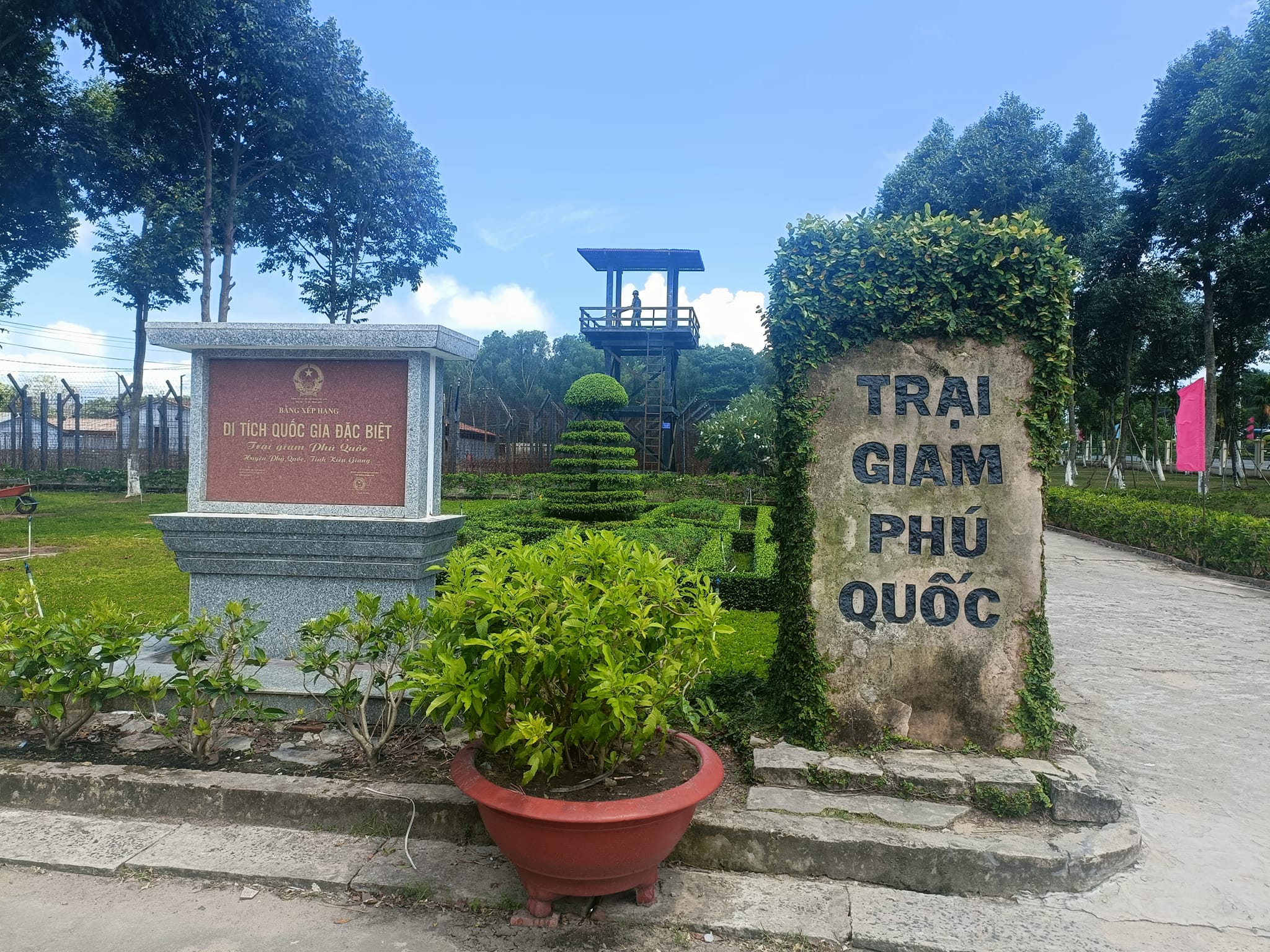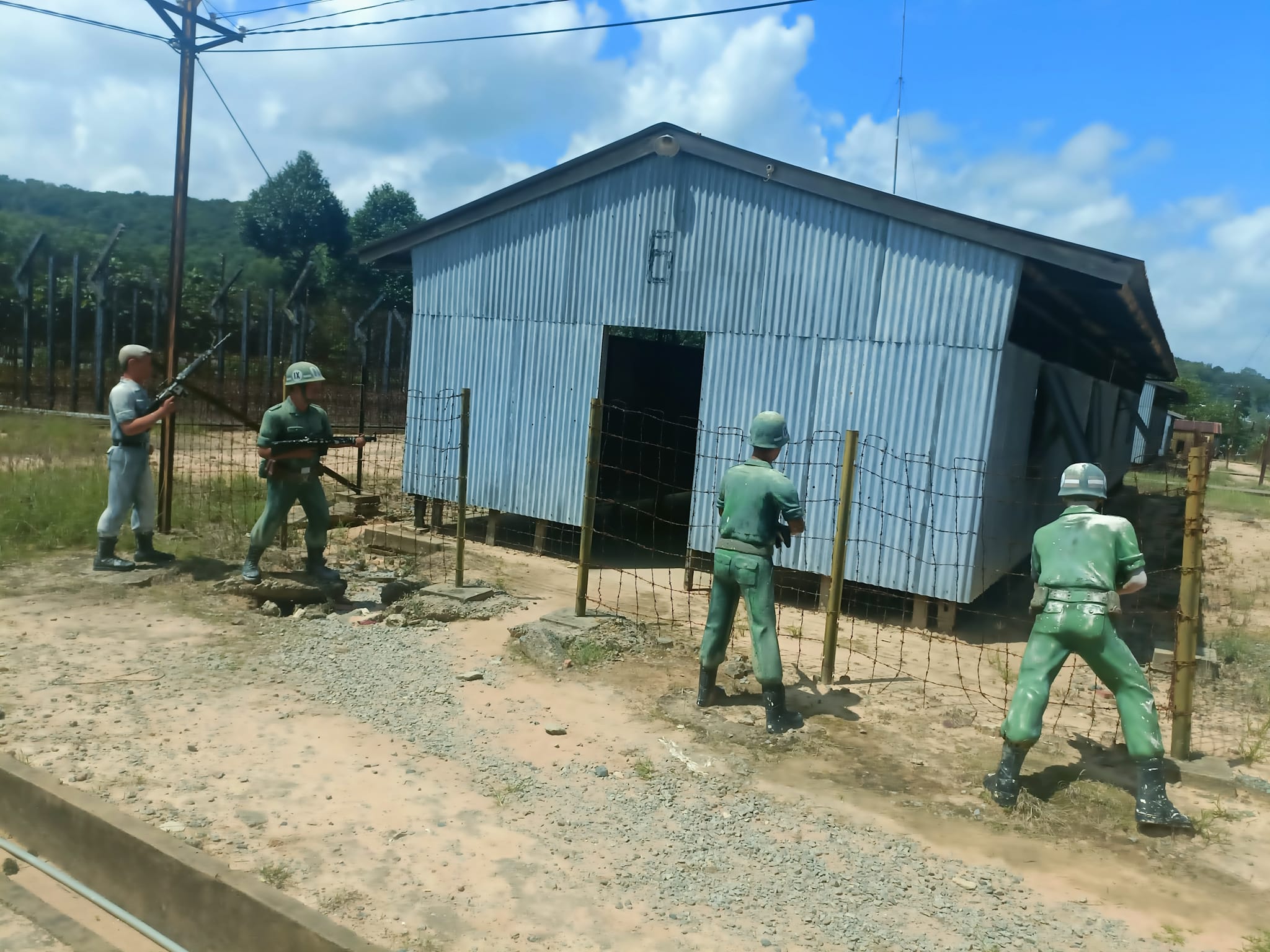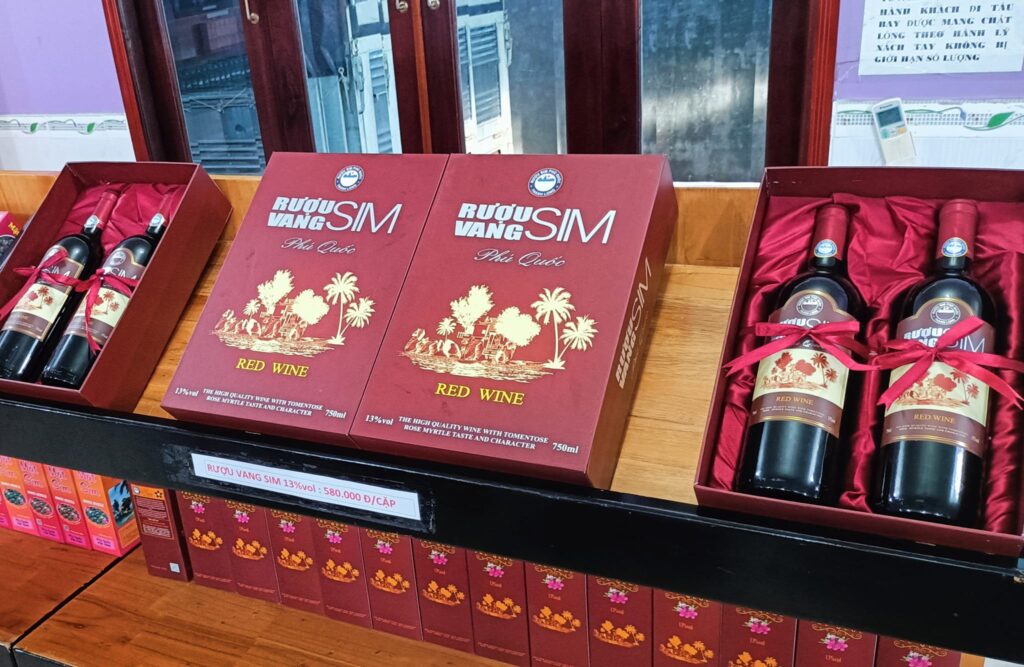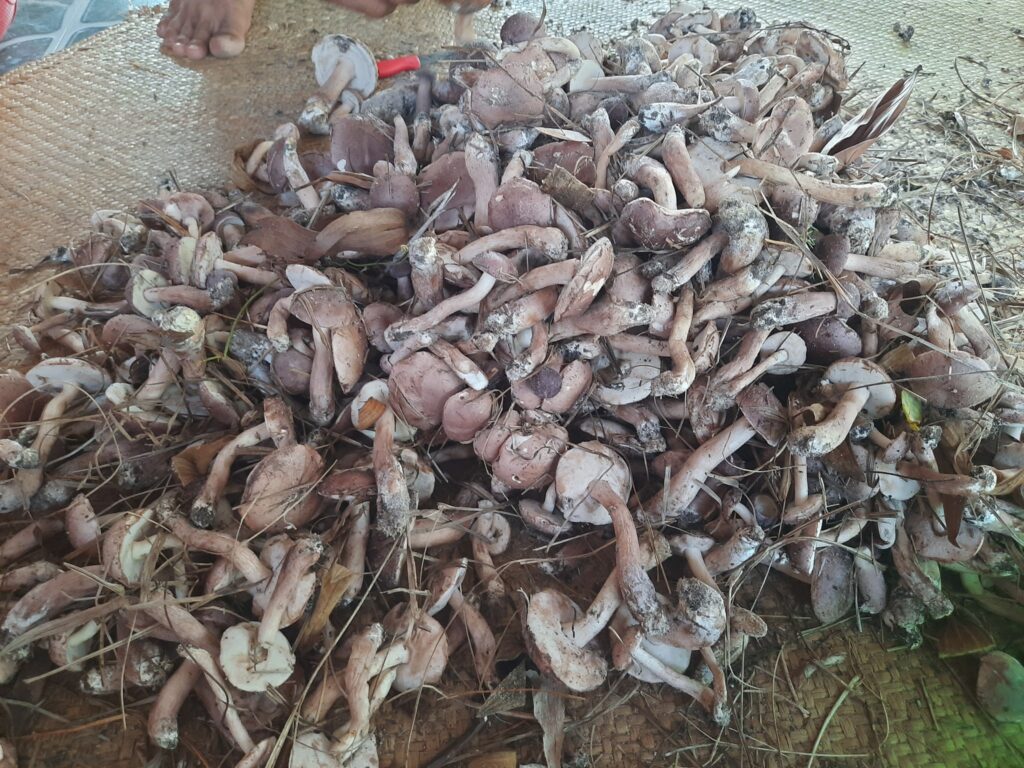Also known as Phu Quoc Prison, Phu Quoc POW Camp, Coconut Tree Prison…
The Phu Quoc Prison Historical Site, located in An Thoi, Phu Quoc Special Zone, An Giang Province, is one of the most significant wartime relics on Phu Quoc Island. It recreates the painful yet heroic chapters of Vietnam’s history during the resistance war.
Often referred to as the “Hell on Earth”, Phu Quoc Prison was notorious for its brutality, with more than 45 documented torture methods used by the U.S. and South Vietnam regime. In less than six years of operation (from June 1967 to March 1973), the prison held around 40,000 prisoners, mainly soldiers from liberation forces, along with political cadres and patriotic civilians. At peak capacity, each cell, measuring only 20m × 5m, was packed with 120–180 detainees. Over 4,000 prisoners were killed, while tens of thousands suffered permanent injuries.
The prison system was operated by approximately 2,000 military personnel, including naval, infantry, and air force units.
The entire compound covered 400 hectares, consisting of nearly 500 buildings divided into 12 zones, including 2 double zones and 10 single zones. Each zone contained four subdivisions—A, B, C, D—with each subdivision measuring 150m long and 50m wide. Every subdivision had 11 buildings, including 9 detention rooms. The structures were built with tin sheets and cement floors to prevent underground escape attempts. Guard towers operated around the clock, while 7–10 layers of barbed wire enclosed the entire area.
Despite extreme conditions, prisoners organized 45 escape attempts, including scaling fences, overpowering guards, and digging underground tunnels.
Remaining Structures and Exhibitions
Today, the site preserves several key structures and reconstructions, serving as an important destination for historical education:
- Battalion 8 Military Police Gate: Two brick pillars with reinforced steel cores mark the former entrance used by prison authorities.
- Prisoners’ Cemetery: Covering 20,427.8 m² on Hill 100, rebuilt after 1975. The centerpiece is a raised-fist monument symbolizing the indomitable spirit of Vietnamese revolutionaries.
- Kien Van Church Ruins: The only religious structure within the prison complex, now remaining with partial walls, foundation, and corner pillars.
- Exhibition House: Includes two rooms with 43 artifacts and over 100 archival photos, illustrating the prison’s structure, torture methods, and prisoners’ resistance activities.
Reconstructed B2 Subdivision (17,693 m²)
The B2 area is one of the most vivid reconstructions where visitors can witness realistic models and scenes:
- Watchtowers: 5m-high steel posts at each corner
- Barbed-wire fences: 8–10 layers surrounding the compound
- Subdivision gate: fortified with multiple layers of razor wire
- Tiger Cages (barbed-wire cages): lying, sitting, and half-height types, each only about 2m × 0.5m × 0.5m
- “Cat-so” metal boxes: small containers with air holes and food slots used for solitary confinement
- Kitchen and dining barracks: tin-sheet structures with reenactments of prisoners cooking
- Detention rooms 1–18: depicting daily life, protests, hunger strikes, torture scenes, bombings, and resistance movements
- Room 14: featuring a recreated 25m underground escape tunnel
- Room 17: reenacting tunnel digging and escape efforts
- B2 Solitary Cell: steel-walled confinement area showing brutal torture methods such as beatings with wooden mallets, spike boots, “airplane rides,” and near-burial punishment
- Toilet area: models depicting forced waste-carrying labor imposed on prisoners
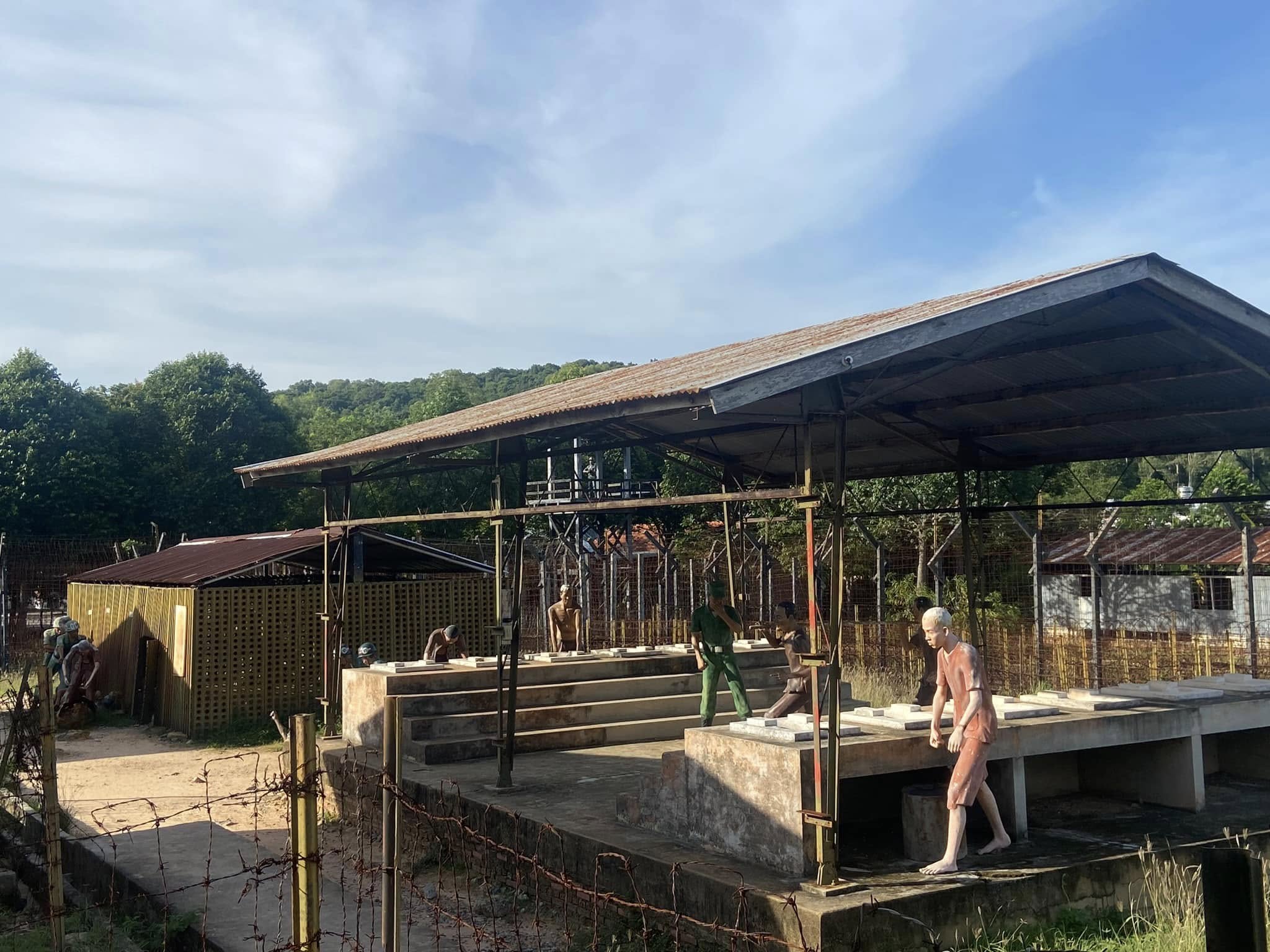
Other Features Within the Complex
Sim Hill Martyrs Memorial: 12,420.5 m², designed with symbolic wave-shaped walls
Battalion 7 Military Police Gate: rebuilt according to original measurements, standing 4.1m tall
Command Headquarters Gate & Buildings: includes four reconstructed structures using reinforced concrete, brick walls, tin roofs, and barbed-wire fences
A Place of Memory and National Education
Today, the Phu Quoc Prison Historical Site welcomes tens of thousands of visitors annually, including many former prisoners returning to the place where they were once held. The site plays a crucial role in educating younger generations about patriotism, sacrifice, and the value of peace.
With its exceptional historical, cultural, and memorial significance, the Phu Quoc Prison Historical Site was designated a National Special Relic under Decision No. 2408/QĐ-TTg dated December 31, 2014, by the Prime Minister of Vietnam.




